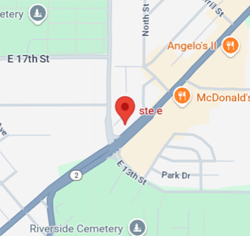Rescue Task Force Instructor Course-Rockford
Alert
Registrations are closed for this event
Waiting List
Rescue Task Force Instructor Course-Rockford
Members' Fee: $0
Sworn Non-Members' Fee: $0
Non-Members' Fee: $0
DOWNLOAD FILE
Date: Thursday, August 14, 2025
Ends On: Friday, August 15, 2025
Registration Deadline: Friday, August 1, 2025
Time: 8:00 AM - 4:00 PM
Ends On: Friday, August 15, 2025
Registration Deadline: Friday, August 1, 2025
Time: 8:00 AM - 4:00 PM
Instructor Location:
Ingersoll Machine Tools
Instructor: Edward MohnIngersoll Machine Tools
707 Fulton Avenue
Rockford, IL
Rockford, IL
Members' Fee: $0
Sworn Non-Members' Fee: $0
Non-Members' Fee: $0
DOWNLOAD FILE
PURPOSE OF COURSE: This two-day, 16-hour course is designed to train police officers and firefighter/paramedics in the specialized skill sets necessary to teach the active threat rescue task force mission. Law enforcement students need to have attended End User Rapid Deployment Training. Fire department personnel should have basic first aid training or above. There are no prerequisites for EMS personnel.
COURSE DESCRIPTION: The purpose of this course is to provide police officers and firefighter/paramedics training that will enable them to teach first responders to operate together in the warm zone during an active threat situation. This will provide them the skill sets to teach first responders how to rapidly perform critical lifesaving medical procedures and triage under the force protection of law enforcement.
This course shall provide the student instructors with defined roles, responsibilities, and operational procedures to teach first responders how to support a rapid deployment rescue task force (RTF) response. Student Instructors will learn how to teach RTF teams to operate in the warm zone, rapidly performing critical life-saving medical procedures and triage under the force protection of law enforcement. The RTF shall continue progressing forward in the designated warm zone until all victims have been triaged and accounted for. Initial RTF teams will not normally be involved in the movement of victims unless extenuating circumstances are present.
The student instructors will learn to teach first responders that their initial goal is to triage and perform life-saving measures. Also, that RTF's shall remain as a group when deployed. In the unlikely case of a life or death situation regarding the safety of the RTF, the law enforcement component may have to separate to address a lethal threat, but must ensure the fire service component is sheltered in place or evacuated. Any time a RTF separates, command must be notified immediately, and all attempts to bring in additional law enforcement to assist with protection should be made.
COURSE GOALS: The goals of this course are as follows:
• Ensure students have an excellent understanding of rescue task force tactics and strategy.
• Ensure students can perform rescue task force tactics.
• Ensure the student instructors demonstrate their ability to teach rescue task force tactics and strategies.
• Provide students with an inventory of appropriate equipment to be used when performing the RTF mission, so they can advise their students as to what the appropriate equipment is required for the RTF mission.
• To allow students the opportunity to participate in realistic scenarios and demonstrate their ability to perform RTF skills.
• Allow student instructors the ability to then develop and present realistic scenarios that will help their students learn the RTF skill sets.
• Understand and embrace the concept of tactical emergency treatment.
• Recognize and identify tactical zones of operations (cold, warm, and hot).
• To provide students with an understanding of rescue task force responsibilities, techniques, and strategies.
• To allow students the opportunity to participate in classroom discussions, group exercises, and realistic scenario training.
• Understand interior and exterior patient collection points (PCP) and patient movement protocols.
ATTENDANCE POLICY: Students must attend all 16 hours of the course.
SAFETY PROTOCOLS: The following safety protocols will be observed at all times during this program:
• A safety briefing will be given before each training session.
• There will be a clearly-defined training area.
• There will be no live ammo or loaded weapons within the designated training area, NO EXCEPTIONS!
• Any personnel entering the training area should be confronted and instructed to secure weapons and ammunition outside of the training area.
• All training weapons will be checked by at least two instructors.
• All training weapons will be conspicuously marked with colored tape in two places.
• All training long guns will have a chamber blocking device installed.
• All pouches, pockets, bags, purses, etc. will be checked for ammo and weapons.
• A line inspection and search of all participants, instructors, and observers will be conducted at least four times.
• Eye protection will be required for all personnel present.
• Ear protection for blank-gun shooters will be required.
• ID vests for instructors will be required.
• Anyone exiting the training area will be checked prior to re-entry by the instructor.
• A new weapons check, line inspections, and tape color checks will be conducted after meal breaks.
This course has been certified by the ILETSB and approved to meet the following mandates:
- Emergency Medical Response - 9 hours with 9 hours scenario based
- Laws concerning stops, searches, and use of force - .5 hours with .5 hours scenario based
- Officer Safety Techniques - 3 hours with 2.5 hours scenario based
- Active Threat Response – 16 hours with 12 hours scenario based

